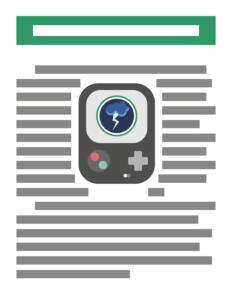Lesson 1: Plugging In
Description:
These materials are designed to enhance Chapter 1, Activity 1: Plugging In. Youth will activate their prior knowledge about electricity and the role it plays in their lives.
Focus Questions:
- What do you know about electricity?
- Why do you think it is important to learn about electricity?
- What are some ways that electricity impacts your life?
Life Skills:
- Learning to Learn
Virtual Assets
Static Electricity Simulation
Help youth visualize the science behind static electricity. You can control the simulation from this window. Click in the lower right-hand corner to see it in fullscreen view.
PhET Interactive Simulations
University of Colorado Boulder
https://phet.colorado.edu
Visualizing Static Charge Worksheet
This activity is structured to help youth use the Static Electricity Simulation to explore static electricity.
Scavenger Hunt: Writing Prompt
Integrate writing into your group’s work. This document contains four prompts that you could assign youth to help them think about electricity.
What Items Use Electricity?
See if you can figure out What’s Electric? on Educaplay. Learn how to tell the difference between electrical and non-electrical items in a room by selecting the correct item when given a choice.
It’s Electric Video: Static Electricity
Here’s a link to our After Dinner Science page: It’s Electric!
If you’d like to try out more of our grab-and-go experiments, check out our Grab and Go page.
Lesson 2: Getting it Together
Description:
These materials are designed to enhance Chapter 1, Activity 2: Getting It Together. Youth will determine the tools and supplies they will need to work safely with electricity.
Focus Questions:
- What do you need to do to keep yourself safe when working with electricity?
- Why is it important to use the correct tools when you are performing a task?
- What are the names of the tools and the supplies that we will be using?
Life Skills:
- Learning to Learn
- Keeping Records
- Planning/Organizing
Virtual Assets
Introduction
Materials
Dr. Grant Ellington provides an overview of the materials used in this curriculum.
Introduction to Wires
Dr. Grant Ellington shares information about different types of wires. He demonstrates how to use alligator clips to make wiring easier for this curriculum. He also demonstrates how to use wire strippers if alligator clips are not available.
Using a Multimeter
Dr. Grant Ellington reviews types of wires. Then he demonstrates how to use a multimeter to deepen your learning about electricity.
Electrical Tools Matching Game
Want to test your knowledge of electrical tools? Try out this game on Educaplay. Match the pictures with the correct name for each tool that can be used to work with electricity. Note: You may have to scroll down to see all of the cards.
Lesson 3: Bright Lights
Description:
These materials are designed to enhance Chapter 1, Activity 3: Bright Lights. Youth will build a simple circuit, including a power source, path, and load, that can function as a homemade flashlight.
Focus Questions:
- What is electricity?
- What is necessary for a circuit to function?
Life Skills:
- Problem Solving
Virtual Assets
DIY Flashlight
4-H Agent Taylor Jones explains how to make a simple flashlight using a battery, bulb, and aluminum foil.
Design Notebook: Bright Lights
Support youth to think like electrical engineers as they build their flashlights. The Design Notebook provides space for youth to plan their work, get and respond to feedback, and iterate their designs.
This curriculum is produced by National 4-H and can be located at shop4-h.org. The activities on this page are designed to enhance and work with the curriculum, they are not a substitute for the book content.




